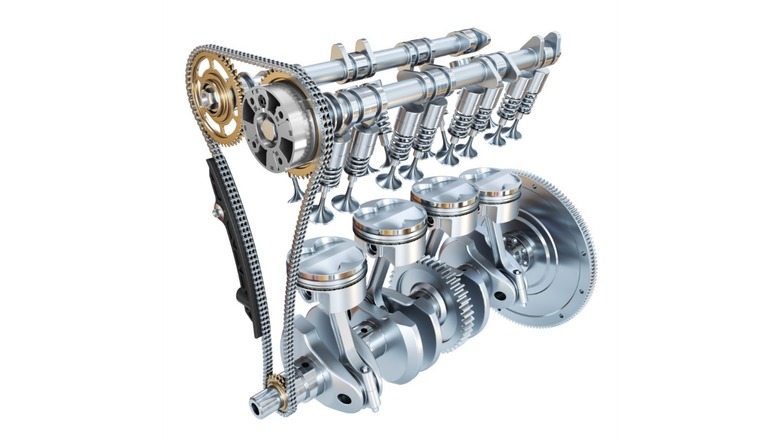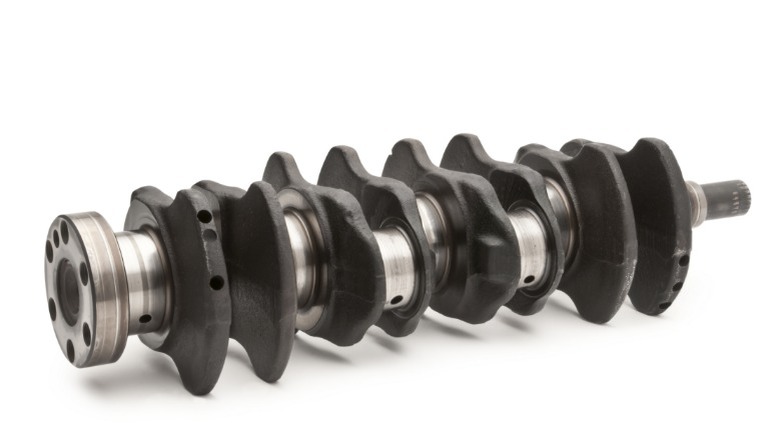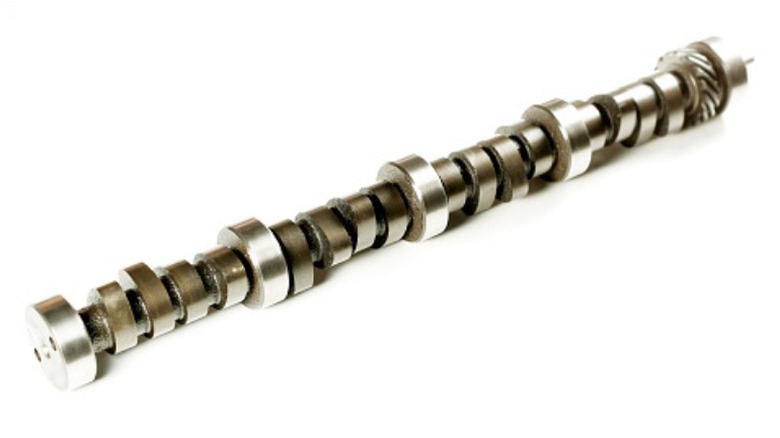Crankshaft Vs. Camshaft: What's The Difference?
The internal combustion engines that power our vehicles require a vast amount of diverse parts to function. Some of those components are moderately familiar and recognizable, like hoses, belts, and fluid reservoirs. However, those well-known parts represent only a fraction of the components that work together to send power to your car's wheels. The crankshaft and the camshaft are two parts that may be less well-known when it comes to automotive engine components. Nonetheless, these two pieces are critical for the function of your car's motor. They each perform key roles in the combustion process, and if either component fails, your engine will be incapable of running.
The crankshaft and the camshaft are separate components. The words refer to distinct parts and are not interchangeable. That said, the two components are connected, and neither could function without the other. Put briefly, the crankshaft gets its power from the pistons' movement, and it sends power to other components like the transmission and engine accessories. The camshaft, on the other hand, gets its power from the crankshaft via a timing chain or belt, and it controls the intake and exhaust valves.
That's a very basic breakdown of what these two components do. If you're interested in learning more about how crankshafts and camshafts work, we've got you covered. As a former professional automotive repair technician and a lifelong gearhead, I'll break down these two parts in simple terms. So, let's dive in and explore the differences between crankshafts and camshafts, including what they do and why they're so vital for the engines that power our cars.
What is a crankshaft?
Your car's engine gets its power from small, internal explosions. As those explosions occur, they propel pistons up and down inside the engine block. The pistons are attached to a long, heavy-duty rod known as the crankshaft, and as they move up and down, the crankshaft spins. That spinning movement is the source of power for various vehicle components.
On its rear end, the crankshaft connects to the transmission via a flywheel flange, allowing engine power to reach your car's wheels. On the front end, the crankshaft sends power to a series of pulleys. First, a toothed-gear wheel connects to the timing chain or belt, allowing the crankshaft to send rotational power to the camshaft(s). That part of the crankshaft is located outside of the crankcase or engine block, but behind a protective barrier known as the timing cover. Beyond that cover, the crankshaft pulley is exposed to the engine bay. Another belt, known as the serpentine or drive belt, connects to this pulley and transfers the shaft's rotational energy to various other accessories, like the air conditioning compressor, power steering pump, and alternator.
The crankshaft is an integral part of your car's internal combustion engine. It's responsible for tying multiple parts of the engine together and for facilitating the transformation of power from raw linear energy to the rotational energy necessary to move your vehicle down the road.
What is a camshaft?
Like crankshafts, camshafts are heavy-duty rods located inside our car's engines. However, camshafts are also significantly smaller than crankshafts. While they're connected in various ways and perform similar functions, they're not the same thing.
Most vehicles have one or two camshafts. While pushrod engines feature camshafts located inside the engine block, overhead cam (OHC) engines — like DOHC and SOHC motors — feature one or two camshafts located above the pistons in the cylinder head. Your car's camshaft(s) connects to the crankshaft via a timing belt or chain. However, these two shafts do not spin at the same speed. Because of the timing chain or belt's precise tension, the camshaft(s) spins at one half the speed of the crankshaft. That timing is vital because the camshaft(s) control the engine's exhaust and intake valves. While the intake valves let fresh air into the combustion chambers, the exhaust valves expel waste gasses after each tiny explosion. If the valves don't open and close at the proper times, the entire combustion process will be disrupted, and your engine will not function properly — if it runs at all.
The camshaft(s) and the crankshaft both rely on each other to work, and the timing chain or belt is essentially the glue that holds them both together. It's critical that the camshaft opens and closes the valves at the proper moment in the pistons' cycle. That's why it's so important that you keep up with routine maintenance. While the camshaft, crankshaft, and timing chain/belt don't require frequent attention, they do need periodic maintenance. It's vital that you consult your vehicle owner's manual to identify the recommended maintenance intervals and that you follow them to a tee to keep your car running properly for the long haul.


